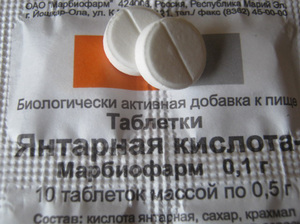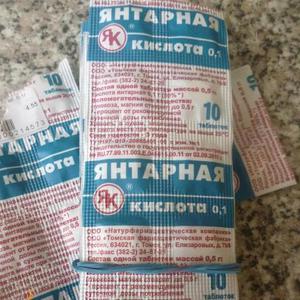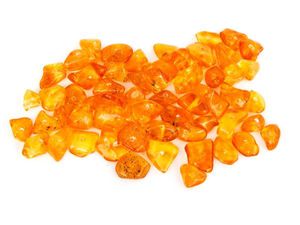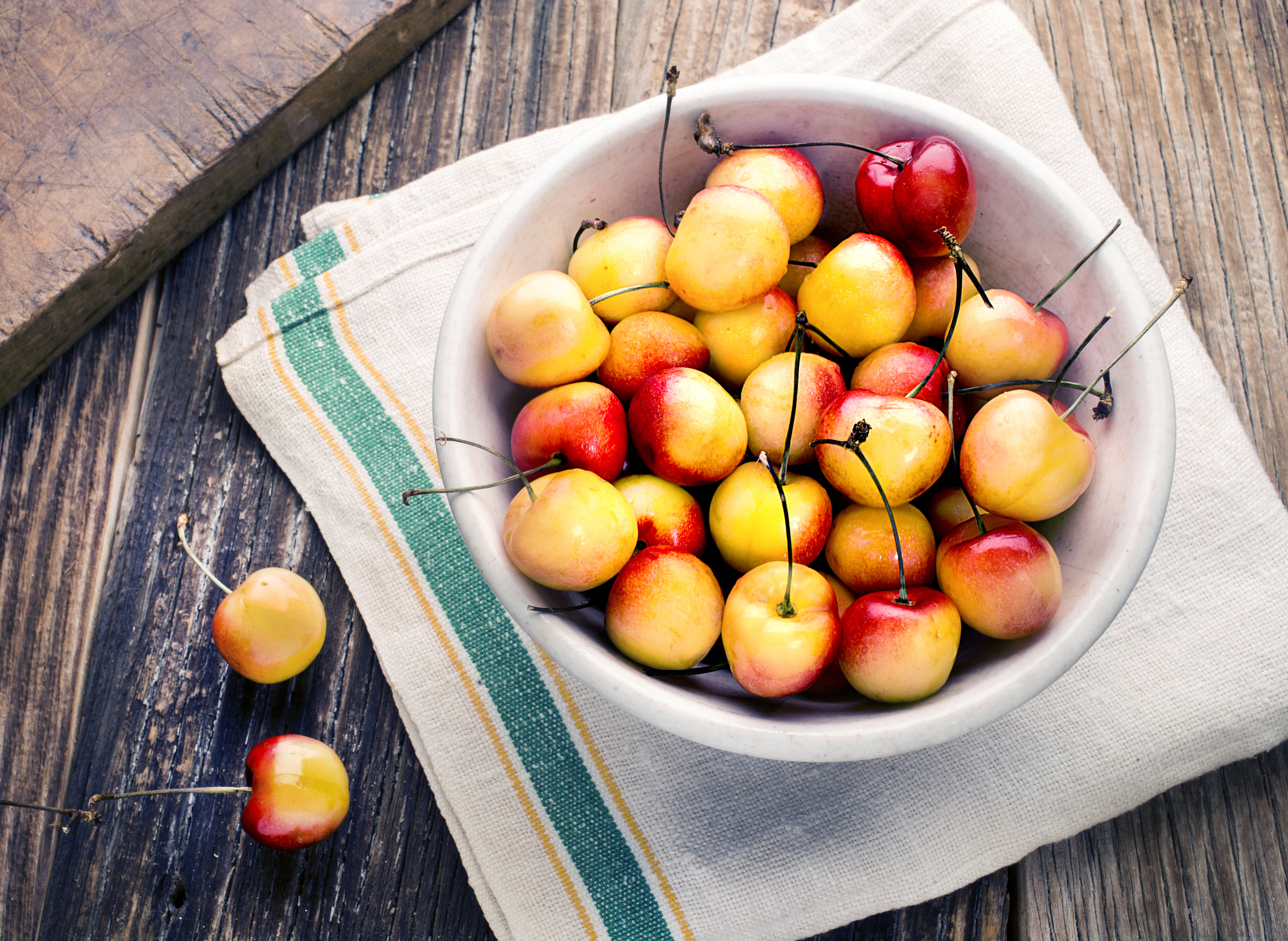Houseplants are found in almost every house or apartment. They give comfort to the home, have a beneficial effect on the microclimate. But in order for green pets to please the eye every day, they need to create favorable conditions for growth and flowering. Succinic acid can help in this, it will not be difficult to use even a novice florist.
But in order for its application to be more effective, first it is necessary to understand the properties and features of the use of such a substance.
Content
What is succinic acid?
Succinic acid (scientifically, ethane-1,2 - dicarboxylic acid), is colorless crystals, perfectly soluble in alcohol and in water. Does not possess any smell.
In natural conditions, it can be found everywhere, in small quantities it is included in the chemical composition of plants and animals, it is produced by the human body, it is present in amber and brown coal, and for its industrial production, a special treatment of maleic anhydride is used.
This substance can be purchased in the form of powder and tablets.
Properties of succinic acid
The main properties of this substance, which became the reason for its widespread use, include:
 Does not cause environmental pollution due to its good natural utilization;
Does not cause environmental pollution due to its good natural utilization;- Normalizes the vital activity of beneficial soil microorganisms;
- Promotes the destruction of toxic substances in the soil;
- It is a biostimulant with a wide spectrum of action.
- Effects of succinic acid on indoor plants
First of all, it should be noted that succinic acid can not be called a fertilizer for plants... It is a stimulant for many processes during growth and an excellent adaptogen.
It contributes to:
- Increase the immunity of the plant, making it more resistant to aggressive environmental factors and diseases;
- Activation of metabolism, which, in turn, accelerates growth and prevents the accumulation of nitrates and other harmful compounds in plant tissues;
- Rooting process, which is especially important for cuttings or only transplanted seedlings;
- Assimilation of the entire spectrum of fertilizers;
- An increase in the amount of chlorophyll in the leaves;
- Plant recovery after stress (care errors, severe damage from diseases or pests, drying out or waterlogging, transplanting, etc.).
In addition, succinic acid does not accumulate either in the plants themselves or in the soil.
Application methods
Correctly applying succinic acid can significantly improve conditions for plant growth... The recommendations for use differ depending on the method of application.
The use of succinic acid in tablets
Succinic acid, which is available in tablets, is the most convenient form of industrial production of this drug. Application methods depend on specific tasks.
The use of succinic acid in tablets to stimulate the root system
 A good result can be achieved if succinic acid is used to stimulate the growth of the plant root system. To begin with, you need to correctly make a solution from tablets. This will require take 3 tablets and fill them with a liter of water... You should get a not too concentrated solution that will not harm the plants.
A good result can be achieved if succinic acid is used to stimulate the growth of the plant root system. To begin with, you need to correctly make a solution from tablets. This will require take 3 tablets and fill them with a liter of water... You should get a not too concentrated solution that will not harm the plants.
A more concentrated solution will not give a positive result.
Further, you should proceed depending on whether you need to care for an already adult specimen or for a young seedling.
In the first case, this substance is applied directly under the roots until the soil, in the area of the root system, is completely saturated. It is required to repeat the application of the drug once a week until the general condition of the plant begins to improve. Then you can move on to other agrotechnical methods of care.
Plants prepared for planting soak for a maximum of 1 hour... In this case, the use of succinic acid in tablets provides significant support to the young plant, as a result, in the future it will develop much better.
Feedback:
I used succinic acid for cacti and succulents. I did not expect strong changes from them, but I was very surprised when, within a month, my Haworthia formed 10 children at the same time.
But I would not recommend reintroducing this substance to cacti and succulents: the opposite reaction is obtained... I use it no more often than once for two years.
Using succinic acid tablets for stems
 When it is required to strengthen the stems or stimulate the plant to emerge new shoots, it is required to make a less concentrated solution than for the root system. Which method of application is enough for one tablet per liter of water.
When it is required to strengthen the stems or stimulate the plant to emerge new shoots, it is required to make a less concentrated solution than for the root system. Which method of application is enough for one tablet per liter of water.
Plant stems are treated with a ready-made solution by spraying. Therefore, you will need to purchase a spray bottle. The solution is applied to all parts of the growing plant that are located above ground level. Leaves, shoots and trunk are processed.
Succinic acid is also used in tablets when the plant has been severely damaged. For example, it was frostbite or very dry. Thanks to this treatment, it will be possible to speed up the restoration of the flower.
This substance is also used for rooting cuttings. Cuttings are processed with a solution of 0.02%. Slices of cuttings are immersed 2 cm in a liquid solution of the drug and left for 2-3 hours.
Feedback:
I use amber for watering seedlings, in a ratio of 1 tablet to two liters of ordinary tap water. First, I dissolve the tablet in a small amount of well-warm water, then add cold water to the required volume.
I water about once a week... Plants, compared to untreated plants, grow faster and become less sensitive to cold.
But there is also a negative point, with prolonged use of amber, it begins to oxidize the soil, which will not please all plants. Therefore, it is necessary to return the acidity of the soil to normal by all means.
The use of succinic acid for orchids
Succinic acid has a strengthening and stimulating effect. Flowers that have stalled in growth, after the use of amber, begin to more actively increase the green mass, form new roots.
Directly for orchids, succinic acid is useful for active root formation - this is the most problematic moment for these plants, especially those bought in the store. After using this drug, orchids form new, healthy roots more actively, plants take root better.
To stimulate the formation of roots, one tablet of succinic acid is dissolved in 500 ml of distilled water. If available, succinic acid is in powder form, then the volume at the tip of the knife is taken.From a spray bottle, the lower leaves of the orchid, the root collar are carefully treated with this solution, and the soil is watered with the remaining solution. It makes sense for a substance to reach its target accurately soak the container with the orchid in the solution - the same as with submerged irrigation. The soil will be well saturated, and the succinic acid will act for a longer period.
It is important in what dosages to prepare succinic acid for orchids in order to stimulate the development of the plant. Although it can be noted that cases of damage to plants from an overdose of this substance have not yet been recorded. But in everything a measure is needed to achieve the necessary results.
Feedback:
I used amber for rooting orchids. The effect was average. Compared to the control cuttings that were not processed, the rooting rate increased by 30-35 percent.
I also noticed that the ready-made solution of succinic acid is very quickly loses its properties, not in a day, as they usually write, but in 10-12 hours.
Storage
It is required to store the drug in undiluted form in a dark dry place, at a temperature not exceeding 25 degrees.
The prepared solution retains its properties for no more than 3-5 days.
Precautions
 This drug is not toxic to humans and animals and does not cause environmental pollution. But solutions of significant concentrations, when in contact with the eyes or stomach, often cause inflammation of the mucous membranes. If the concentrated drug gets into the eyes or stomach, they should be washed immediately with a large amount of water. After this, consult a doctor immediately.
This drug is not toxic to humans and animals and does not cause environmental pollution. But solutions of significant concentrations, when in contact with the eyes or stomach, often cause inflammation of the mucous membranes. If the concentrated drug gets into the eyes or stomach, they should be washed immediately with a large amount of water. After this, consult a doctor immediately.
The drug should be stored out of the reach of children and animals, and not near food and medicine.
Conclusion
As follows from the above, the use of succinic acid for indoor plants brings good results... It also works well with a full range of indoor fertilizers and chemicals.
Succinic acid for flowers is a kind of reanimator that helps the plant to endure adverse external conditions.
And as a result, your favorite flower will always delight you with beauty and health.


